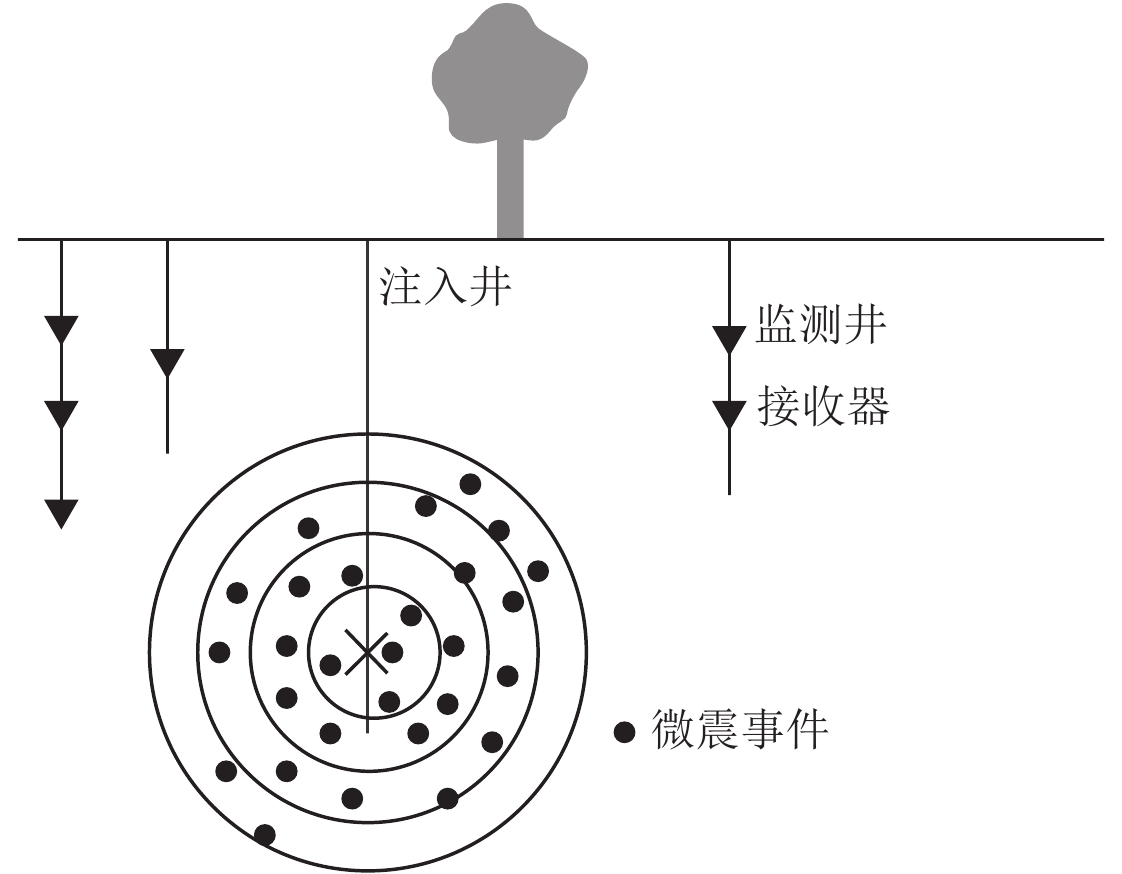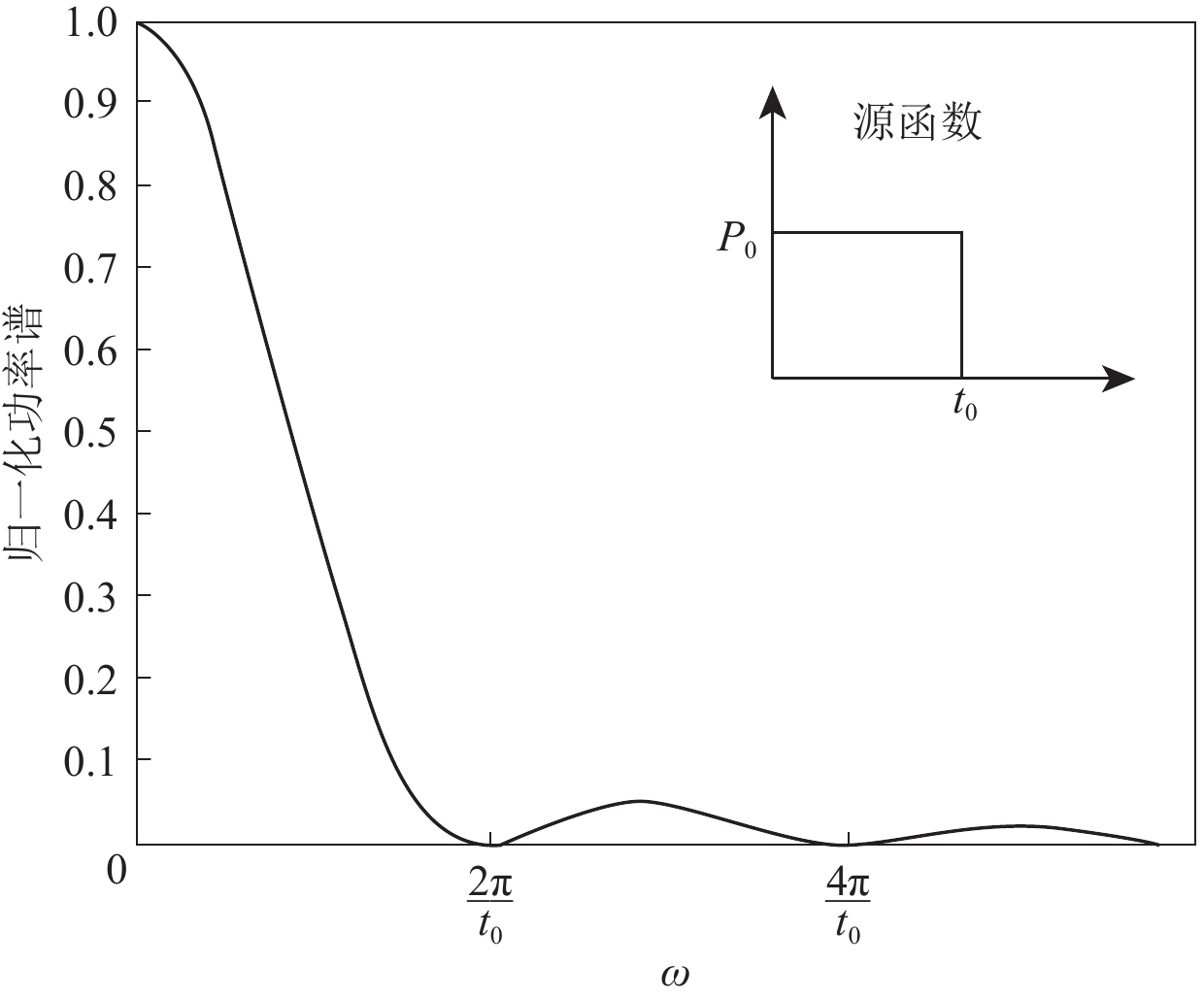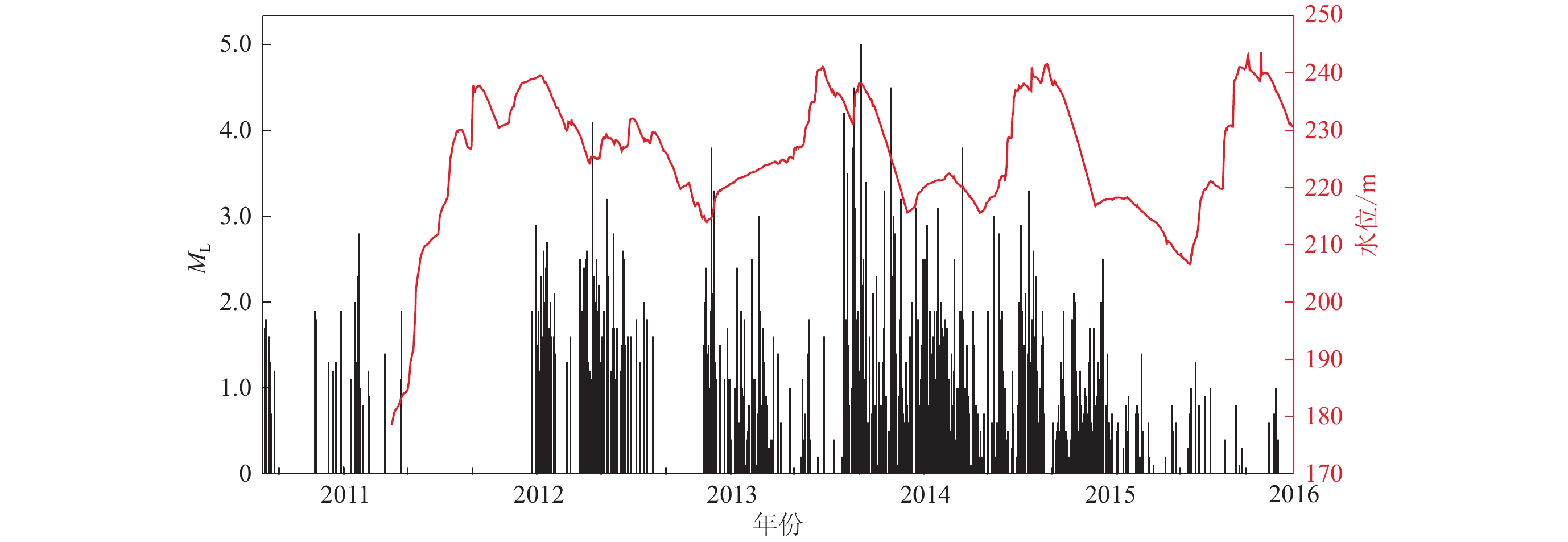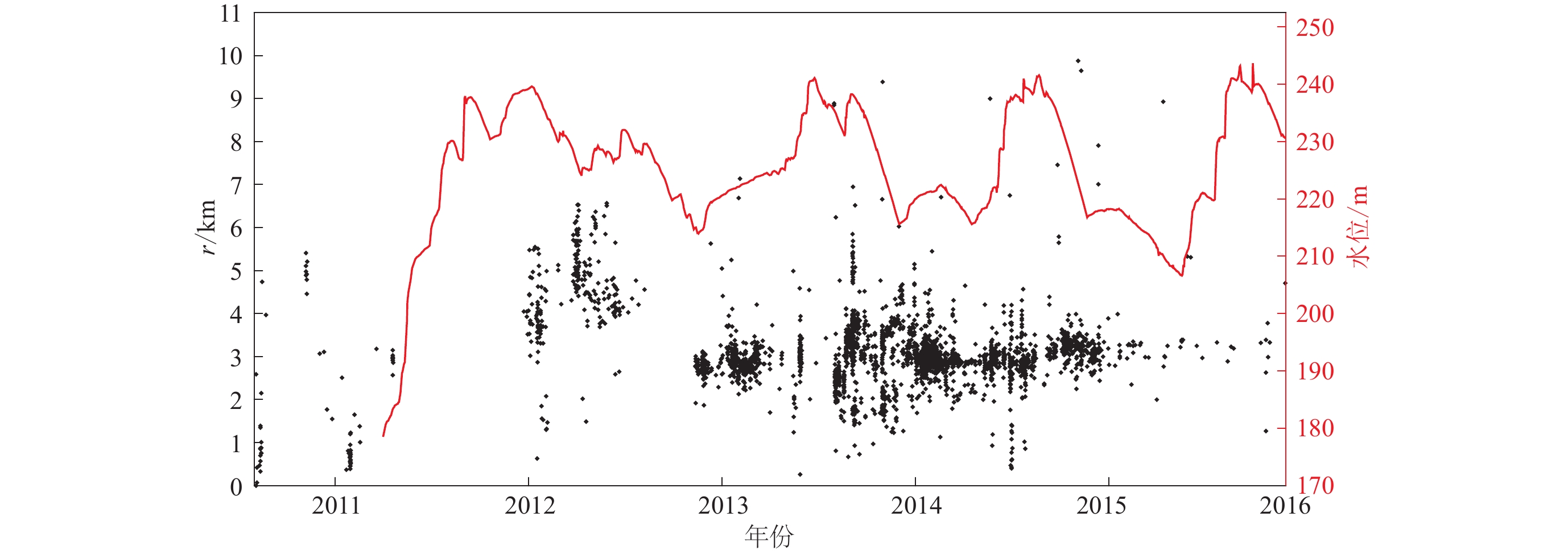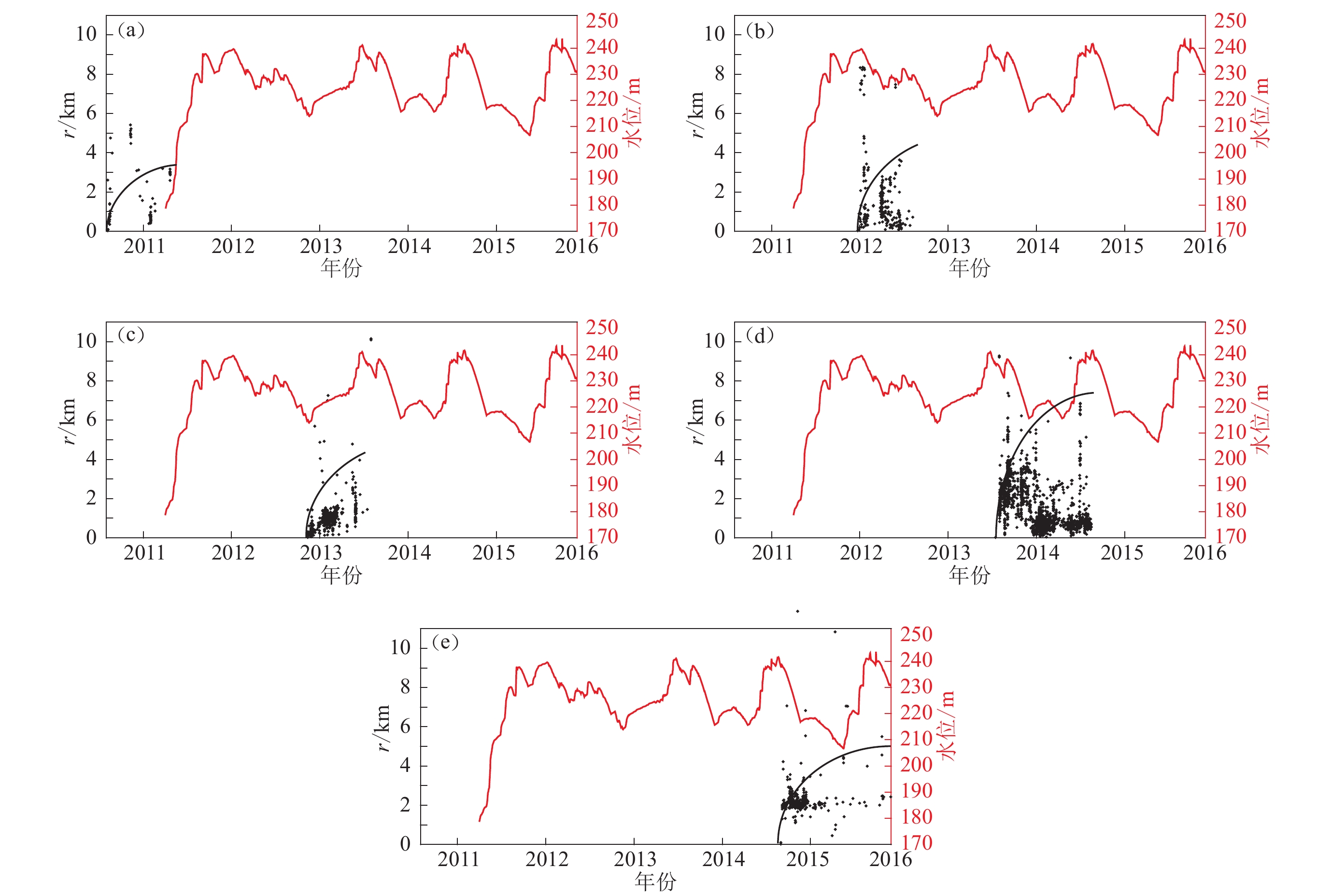The pore pressure diffusion characteristics of Xianyou earthquake swarm in Fujian Province
-
摘要: 2010年8月至2015年12月,福建仙游地区发生了一系列小震群活动。基于孔隙压力扩散机制对精定位的小震数据进行分析,结果显示仙游震群序列在空间上呈丛集分布,且具有明显的分区现象,发震时间受金钟水库水位变化的调制作用较为明显。5个分区(A—E)的流体孔隙压力扩散系数分别为0.04,0.08,0.07,0.12和0.05 m2/s,伴随着地震活动性由强至弱,孔隙压扩散系数呈先增后减的变化规律。仙游震群位于断裂构造发育区内,震中分布优势方向与石苍断裂一致,沿着断裂走向的孔隙压扩散系数最大,说明地下流体沿狭长的石苍断裂由NW向NE活动。各分区的流体孔隙压系数与扩散最大距离、最大诱发地震震级及地震释放能量均有较好的相关性。此外,当金钟水库水位下降时,各分区的扩散距离r呈现减小趋势,震群范围收缩,地震频次增加,并伴有较大震级的地震,说明水位下降时,流体孔隙压力的扩散作用在同一地点反复作用,使得触发源附近区域的应力水平更容易达到饱和或临界状态,进而触发较大震级的地震,这也解释了水位下降过程中地震更为强烈的原因。Abstract: From August 2010 to December 2015, a series of small earthquake swarms occurred in the Xianyou area of Fujian Province. Based on the pore pressure diffusion mecha-nism, the small earthquakes data of precise location is analyzed, and it is found that the Xianyou earthquake swarm sequences are cluster distributed in spatial terms and have obvious zoned phenomenon. The origin time is obviously influenced by the modulation effect of water level change in Jinzhong reservoir. The pore pressure diffusion coefficients of five subregions (A to E) were 0.04, 0.08, 0.07, 0.12 and 0.05 m2/s, and along with the seismicity intensity changing from strong to weak, the pore pressure diffusion coefficients changed from increasing to decreasing. The Xianyou earthquake swarm is located in the area where the fault structures developed, and the predominant direction of epicentral distribution is in accordance with the Shicang fault, and the pore pressure diffusion coefficient along the fault strike is the maximum, which shows that the active tendency of the underground fluid is along the Shicang fault from northwest to northeast. The fluid pore pressure coefficient in each subregion is closely related to the maximum diffusion distance, the maximum induced earthquake and the energy released by earthquakes. In addition, when the water level of Jinzhong reservoir falls, the distance from the first small earthquake (trigger source) to the triggered earthquake in the subregion has a decreasing trend, with the range of earthquake groups shrinking, and earthquake frequency and magnitude increasing. This could lead to the conclusion that, when the water level drops, fluid pore pressure diffusion acted repeatedly at the same site, which caused the stress level easier to reach the saturation or critical level in the area near the trigger source, and then triggered a larger earthquake, this is also a possible explanation for the occurrence of stronger earthquakes during the drawdown of water levels. This study will be of reference significance to the prediction of seismicity in Xianyou area in the future, and provide a scientific basis for quantitatively determining risk of reservoir induced seismicity.
-
-
图 2 注水诱发地震的示意模型(引自Shapiro et al,2005a )
Figure 2. A model of water injection induced earthquake (after Shapiro et al,2005a )
图 3 方波的能量谱(引自Shapiro et al,2002 )
Figure 3. Square wave energy spectrum (after Shapiro et al,2002 )
图 4 法国1993年在Soultz干热岩石实验中获得的r−t曲线(引自Shapiro et al,1999 )
1表示外包络线,2表示延迟曲线
Figure 4. Schematic map ofr−t achieved from the hot dry rock experiment in Soultz,France in 1993 (after Shapiro et al,1999 )
Curve 1 denotes the envelop line,while curve 2 denotes the delay line
表 1 福建沿海地区速度结构模型
Table 1 The velocity structure model of Fujian coastal area
地层界面 深度/km vP/(km·s–1) 结晶基底面 4 5.6 上地壳低速层分界面 12 6.1 中地壳低速层分界面 18 6.0 中下地壳分界面 25 6.4 莫霍面 30 6.9 注:引自张路 (2008)。 表 2 仙游震群A—E区孔隙压力扩散系数估算参数表
Table 2 Parameters for estimating diffusivity of pore pressurein subregions A to E of Xianyou earthquake swarm
时段 分区 第一次小震 最大扩散
距离/km小震扩散
持续时间/d发震时间 北纬/° 东经/° ML 震源深度/km 2010−08—2011−04 A 2010-08-04 25.62 118.72 1.3 13 3.5 260 2011−12—2012−08 B 2011-12-23 25.65 118.72 1.9 10 4.5 229 2012−11—2013−06 C 2012-11-11 25.63 118.75 1.5 13 4.2 228 2013−07—2014−08 D 2013-07-16 25.64 118.74 0.4 9 7.2 397 2014−09—2015−12 E 2014-09-07 25.65 118.73 0.1 11 5.0 456 表 3 仙游震群2010—2015年A—E区地震活动特点
Table 3 Seismic characteristics in subregions A to E of Xianyou earthquake swarm from 2010 to 2015
时段 分区 水位变化 最大震级
ML地震次数 震源
深度/kmr/km 小震扩散持
续时间/dD
/(m2·s−2)地震能
量E/J2010−08—2011−04 A 缺失 2.8 68 4—20 5.4 260 0.04 2.26×109 2011−12—2012−08 B ↓ 4.1 230 4—21 8.4 229 0.08 1.12×1011 2012−11—2013−06 C ↑ 3.8 490 5—19 7.2 228 0.07 5.13×1010 2013−07—2014−08 D ↓↑ 5.0 1 803 3—13 9.3 397 0.12 2.97×1012 2014−09—2015−12 E ↓↑ 2.5 351 3—18 6.7 456 0.05 1.08×109 -
陈涛, 刘耀炜, 杨多兴, 张磊, 方震, 许丽卿. 2012. 地震触发、震群与余震活动过程中的孔隙压力作用[J]. 地球物理学进展, 27(6): 2407-2417. Chen T, Liu Y W, Yang D X, Zhang L, Fang Z, Xu L Q. 2012. The role of pore pressure in earthquake triggering and process of swarm earthquakes and aftershocks[J]. Progress in Geophysics, 27(6): 2407-2417 (in Chinese).
程惠红, 张怀, 朱伯靖, 郑亮, 石耀霖. 2013. 卡里巴水库蓄水引起库区应力场变化影响分析[J]. 地震, 33(4): 32-42. Cheng H H, Zhang H, Zhu B J, Zheng L, Shi Y L. 2013. Stress field changes after the impoundment of Kariba reservoir[J]. Earthquake, 33(4): 32-42 (in Chinese).
段刚, 蔡杏辉, 陈惠芳, 游秀珍, 张丽娜, 林彬华. 2017. 福建台网地震目录[EB/OL]. [2017−06−22]. http://www.fjdzj.gov.cn/ca/2017011419000006.htm. Duan G, Cai X H, Chen H F, You X Z, Zhang L N, Lin B H. 2017. The earthquake catalog of Fujian network[EB/OL]. [2017−06−22]. http://www.fjdzj.gov.cn/ca/2017011419000006.htm (in Chinese).
蒋海昆, 张晓东, 单新建. 2014. 中国大陆水库地震统计特征及预测方法研究[M]. 北京: 地震出版社: 35–55. Jiang H K, Zhang X D, Shan X J. 2014. Statistical Characteristics and Prediction Methods of Reservoir Earthquakes in Chinese Mainland[M]. Beijing: Seismological Press: 35–55 (in Chinese).
李强, 李军, 袁丽文, 邱毅, 李锋, 秦双龙, 曹轶. 2015. 福建仙游震群序列ML≥4.0事件震源机制与序列活动特征[J]. 地震, 35(4): 147–156. Li Q, Li J, Yuan L W, Qiu Y, Li F, Qin S L, Cao Y. 2015. Focal mechanisms and activity of ML≥4.0 events in the 2013 Xianyou earthquake swarm sequence in Fujian Province[J]. Earthquake, 35(4): 147-156 (in Chinese).
刘耀炜, 许丽卿, 杨多兴. 2011. 龙滩水库诱发地震的孔隙压力扩散特征[J]. 地球物理学报, 54(4): 1028-1037. Liu Y W, Xu L Q, Yang D X. 2011. Pore pressure diffusion characteristics of Longtan reservoir-induced-earthquakes[J]. Chinese Journal of Geophysics, 54(4): 1028-1037 (in Chinese).
刘远征. 2014. 水库诱发地震与孔隙压力扩散系数研究: 以紫坪铺水库为例[D]. 北京: 中国地震局地质研究所: 30–60. Liu Y Z. 2014. Study of Reservoir Induced Seismicity and Hydraulic Diffusivity: A Case Study of Zipingpu Reservoir[D]. Beijing: Institute of Geology, China Earthquake Administration: 30–60 (in Chinese).
张路. 2008. 福建东南沿海盆地第四纪构造运动模式与动力学成因[D]. 北京: 中国地震局地质研究所: 149–151. Zhang L. 2008. A Kinematic Model and Dynamic Cause of Quaternary Tectonic Movement of Southeastern Coastal Basins in Fujian Province[D]. Beijing: Institute of Geology, China Earthquake Administration: 149–151 (in Chinese).
Bell M L, Nur A. 1978. Strength changes due to reservoir-induced pore pressure and stresses and application to Lake Oroville[J]. J Geophys Res, 83(B9): 4469-4483.
Biot M A. 1962. Mechanics of deformation and acoustic propagation in porous media[J]. J Appl Phys, 33(4): 1482-1498.
El Hariri M, Abercrombie R E, Rowe C A, do Nascimento A F. 2010. The role of fluids in triggering earthquakes: Observations from reservoir induced seismicity in Brazil[J]. Geophys J Int, 181(3): 1566-1574.
Parotidis M, Shapiro S A, Rothert E. 2004. Back front of seismicity induced after termination of borehole fluid injection[J]. Geophys Res Lett, 31(2): L02612.
Shapiro S A, Huenges E, Borm G. 1997. Estimating the crust permeability from fluid-injection-induced seismic emission at the KTB site[J]. Geophys J Int, 131(2): F15-F18.
Shapiro S A, Audigane P, Royer J J. 1999. Large-scale in situ permeability tensor of rocks from induced microseismicity[J]. Geophys J Int, 137(1): 207-213.
Shapiro S A, Audigane P, Royer J J. 2000. Reply to comment by F. H. Cornet on ‘Large-scale in situ permeability tensor of rocks from induced microse ismicity’[J]. Geophys J Int, 140(2): 470-473.
Shapiro S A, Rothert E, Rath V, Rindschwentner J. 2002. Characterization of fluid transport properties of reservoirs using induced microseismicity[J]. Geophysics, 67(1): 212-220.
Shapiro S A, Rentsch S, Rothert E. 2005a. Characterization of hydraulic properties of rocks using probability of fluid-induced microearthquakes[J]. Geophysics, 70(2): F27-F33.
Shapiro S A, Rentsch S, Rothert E. 2005b. Fluid-induced seismicity: Theory, modeling, and application[J]. J Eng Mech, 131(9): 947-952.
Shapiro S A, Kummerow J, Dinske C, Asch G, Rothert E, Erzinger J, Kümpel H J, Kind R. 2006. Fluid induced seismicity guided by a continental fault: Injection experiment of 2004/2005 at the German Deep Drilling Site (KTB)[J]. Geophys Res Lett, 33(1): L01309.
Simpson D W, Leith W S, Scholz C H. 1988. Two types of reservoir-induced seismicity[J]. Bull Seismol Soc Am, 78(6): 2025-2040.
Talwani P, Acree S. 1984. Pore pressure diffusion and the mechanism of reservoir-induced seismicity[J]. Pure Appl Geophys, 122(6): 947-965.





 下载:
下载:
